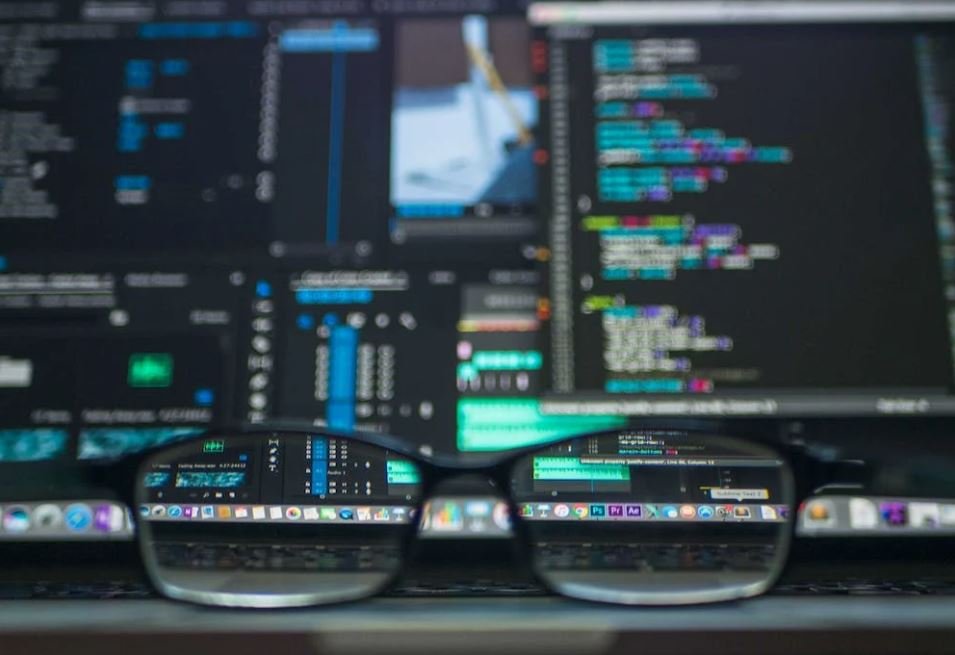Podcast Equipment for 4
The popularity of podcasts has exploded in recent years, and with it, the demand for high-quality podcasting equipment. Whether you are a seasoned podcaster or just starting out, having the right equipment is essential for producing professional-sounding content. In this article, we will explore the top podcasting equipment for teams of 4, so you can create a seamless and engaging podcasting experience.
Key Takeaways
- Choosing the right podcasting equipment is crucial for producing high-quality content.
- Investing in a good microphone and headphones is essential for clear and crisp audio.
- A reliable audio interface and mixer will help manage sound levels and audio inputs effectively.
- Don’t forget about room acoustics and soundproofing to avoid noise interference.
Microphones
Microphones are the heart of any podcasting setup. For a team of 4, it is recommended to use individual microphones for each host to ensure the best sound quality. Some popular options include:
- Audio-Technica ATR2100x
- Shure SM58
- Rode Procaster
Headphones
Headphones are crucial for monitoring audio and ensuring a seamless recording experience. Each team member should have a pair of closed-back headphones to minimize sound leakage. Here are some popular options:
- Sennheiser HD 280 Pro
- Beyerdynamic DT 770 Pro
- Audio-Technica ATH-M50x
Audio Interface and Mixer
An audio interface acts as the bridge between the microphones and the computer. It converts analog audio into digital signals. Investing in a reliable audio interface will ensure clean and noise-free recordings. Here are some popular options:
| Audio Interface | No. of Inputs | Price |
|---|---|---|
| Focusrite Scarlett 4i4 | 4 | $249 |
| PreSonus AudioBox USB 96 | 2 | $99 |
| Behringer U-Phoria UMC404HD | 4 | $129 |
An audio mixer allows you to adjust audio levels and balance multiple inputs. It is especially useful when your podcast involves live guests. Some popular audio mixers for podcasting include:
- Behringer Xenyx Q802USB
- Mackie PROFX12V3
- Yamaha MG10XU
Room Acoustics and Soundproofing
Creating a suitable recording environment is as important as having the right equipment. Proper room acoustics can significantly improve the sound quality of your podcast. Consider using sound-absorbing materials such as foam panels and bass traps to reduce echo and reverberation. Additionally, soundproofing measures like door seals and acoustic curtains help minimize external noise interference.
Conclusion
Investing in high-quality podcasting equipment is essential for producing professional-sounding content. From microphones and headphones to audio interfaces and mixers, each component plays a crucial role in creating a seamless and engaging podcasting experience for teams of 4. Additionally, optimizing room acoustics and soundproofing can further enhance audio quality. By choosing the right equipment and setting up a suitable recording environment, you can elevate your podcasting game and captivate your audience.

Common Misconceptions
Misconception 1: Expensive podcast equipment guarantees high-quality audio
One common misconception people have about podcast equipment is that expensive gear will automatically result in high-quality audio. While it’s true that investing in good equipment can make a difference, quality audio ultimately depends on various factors such as audio editing, microphone technique, and room acoustics.
- Focus on refining your audio editing skills.
- Develop proper microphone technique to capture clear sound.
- Consider the acoustic environment in which you record.
Misconception 2: Professional audio software is necessary for podcast editing
Some individuals mistakenly believe that professional audio software is necessary to edit a podcast effectively. However, there are plenty of user-friendly, affordable, and even free software options available that can provide excellent editing capabilities, suitable for most podcasters.
- Explore free audio editing software like Audacity.
- Consider affordable subscription-based editing platforms.
- Take advantage of online tutorials to learn the basics of podcast editing.
Misconception 3: Expanding your podcast equipment collection guarantees success
Another misconception is that continuously expanding your podcast equipment collection will guarantee podcast success. While having a diverse range of equipment can offer versatility, it is essential to remember that engaging content and consistent delivery are the primary factors that contribute to a successful podcast.
- Focus on creating compelling and engaging content.
- Ensure consistent release of episodes to build an audience.
- Invest in upgrading equipment gradually based on your needs.
Misconception 4: Advanced technical knowledge is necessary to operate podcasting equipment
Some individuals may believe that operating podcasting equipment requires advanced technical knowledge. The truth is that many modern podcasting setups are designed to be user-friendly and intuitive, allowing beginners to set up and record their podcasts with ease.
- Review user manuals and online guides provided with the equipment.
- Take advantage of video tutorials specific to your podcasting equipment.
- Experiment with the equipment to become more familiar with its features.
Misconception 5: You must have expensive headphones for accurate audio monitoring
Lastly, some individuals believe that they must invest in expensive headphones for accurate audio monitoring during podcast recording and editing. While high-quality headphones can provide an enhanced listening experience, it is not necessary to break the bank to obtain accurate audio feedback.
- Research affordable headphones known for accurate audio reproduction.
- Consider closed-back headphones for better noise isolation.
- Focus on identifying any irregularities in your podcast audio during editing.

Introduction
For individuals who are passionate about podcasting, having the right equipment is crucial for delivering high-quality audio and engaging content. In this article, we will explore four essential pieces of podcasting equipment and their role in creating professional podcasts. Each table below presents important information and data regarding the respective equipment.
Microphones
A high-quality microphone is essential for capturing clear and crisp audio in podcasting. Here, we present a selection of microphones with their key features, including price range, type, and recording pattern.
| Microphone | Price Range | Type | Recording Pattern |
|---|---|---|---|
| Shure SM7B | $399 – $499 | Dynamic | Cardioid |
| Rode NT1 | $269 – $299 | Condenser | Cardioid |
| Audio-Technica ATR2100x-USB | $99 – $129 | Dynamic | Cardioid |
Headphones
Good quality headphones are essential for monitoring audio while recording and editing podcasts. The table below highlights some popular headphone options with their prices, type, and additional features.
| Headphones | Price Range | Type | Additional Features |
|---|---|---|---|
| Sennheiser HD 660 S | $499 – $599 | Over-Ear | Open-back design |
| Beyerdynamic DT 990 Pro | $129 – $199 | Over-Ear | Wide frequency response |
| Audio-Technica ATH-M50x | $149 – $169 | Over-Ear | Detachable cable |
Audio Interfaces
An audio interface connects microphones and headphones to your computer, ensuring quality audio capture and playback. The table below showcases several audio interfaces with their price range, connectivity options, and additional features.
| Audio Interface | Price Range | Connectivity | Additional Features |
|---|---|---|---|
| Focusrite Scarlett 2i2 | $159 – $199 | USB | 48V phantom power |
| PreSonus AudioBox USB 96 | $99 – $129 | USB | MIDI I/O |
| Universal Audio Apollo Twin X | $899 – $1,099 | Thunderbolt | Real-time UAD processing |
Pop Filters
Pop filters help eliminate plosive sounds and unwanted noises caused by airflow during recording. The following table presents various pop filters along with their price range and compatibility.
| Pop Filter | Price Range | Compatibility |
|---|---|---|
| Aokeo Professional Microphone Pop Filter | $19 – $29 | Universal |
| Dragonpad USA Microphone Pop Filter | $6 – $12 | Universal |
| Studio Microphone Mic Wind Screen Pop Filter | $10 – $15 | Universal |
Conclusion
Choosing the right podcasting equipment is essential for producing professional and engaging content. The microphones, headphones, audio interfaces, and pop filters discussed above represent key components vital for achieving excellent audio quality. By investing in high-quality equipment tailored to your needs, you can elevate your podcasting experience and provide your listeners with an exceptional auditory journey.
Frequently Asked Questions
Podcast Equipment for 4
What type of microphones are recommended for a podcast with four hosts?
For a podcast with four hosts, it is generally recommended to use a combination of dynamic microphones and a mixing console or audio interface that supports multiple inputs. This ensures each host has their own microphone and allows for individual control of audio levels.
Should I use a USB microphone or XLR microphone for a podcast with four hosts?
It is generally advisable to use XLR microphones for podcasts with four hosts. XLR microphones offer better audio quality and flexibility, especially when used with a mixing console or audio interface that supports multiple XLR inputs. USB microphones may be more suitable for individual use or a smaller number of hosts.
What type of headphones should I use for a podcast with four hosts?
Closed-back headphones are recommended for podcasting with four hosts. Closed-back headphones help reduce bleed from other microphones, thereby providing each host with a clean audio monitoring experience. Additionally, using headphones with individual volume controls can be useful for personal monitoring preferences.
What is an ideal recording environment for a four-host podcast?
An ideal recording environment for a podcast with four hosts is a quiet space with minimal background noise. Consider using soundproofing materials, such as acoustic panels or foam, to reduce echo and external sounds. Additionally, maintaining a comfortable room temperature and ensuring proper ventilation can contribute to a conducive recording environment.
Do I need a mixer or audio interface for a podcast with four hosts?
Yes, a mixer or audio interface is highly recommended for a podcast with four hosts. This allows you to connect multiple microphones and control individual audio levels, providing better balance and audio quality. Additionally, a mixer or audio interface often provides features like EQ adjustments, compression, and headphone monitoring.
Are there any recommended podcast equipment bundles for four hosts?
Yes, several podcast equipment bundles are available for four hosts, including microphones, headphones, mixing consoles or audio interfaces, and necessary cables. These bundles are often designed to offer a convenient, all-in-one solution for setting up a four-host podcast, saving you time and effort in selecting individual components.
What other accessories or equipment should I consider for my four-host podcast setup?
In addition to microphones and headphones, some accessories or equipment you may consider for your four-host podcast setup include a microphone stand or boom arm for each host, pop filters to minimize plosive sounds, shock mounts to reduce mechanical noise, and a dedicated recording software or digital audio workstation (DAW) to capture and edit your audio.
What is the recommended budget for podcast equipment for four hosts?
The recommended budget for podcast equipment for four hosts can vary depending on your specific needs and preferences. However, a reasonable estimate for a decent quality setup would range from $500 to $1500. It is essential to balance your budget with the desired audio quality and features to suit your podcasting goals.
Where can I find detailed reviews and recommendations for podcast equipment for four hosts?
Various online resources provide detailed reviews and recommendations for podcast equipment, including setups for four hosts. Websites like podcasting-specific forums, tech review sites, and YouTube channels dedicated to audio gear are valuable sources for gathering insights and making informed decisions about your podcast equipment selection.
What are some common challenges faced when recording a podcast with four hosts?
Some common challenges when recording a podcast with four hosts include managing microphone bleed between hosts, ensuring balanced audio levels, avoiding cross-talk or interruptions, and maintaining a cohesive discussion flow. Proper setup, communication, and practice can help mitigate these challenges and ensure a smooth recording process.


Leave a Reply